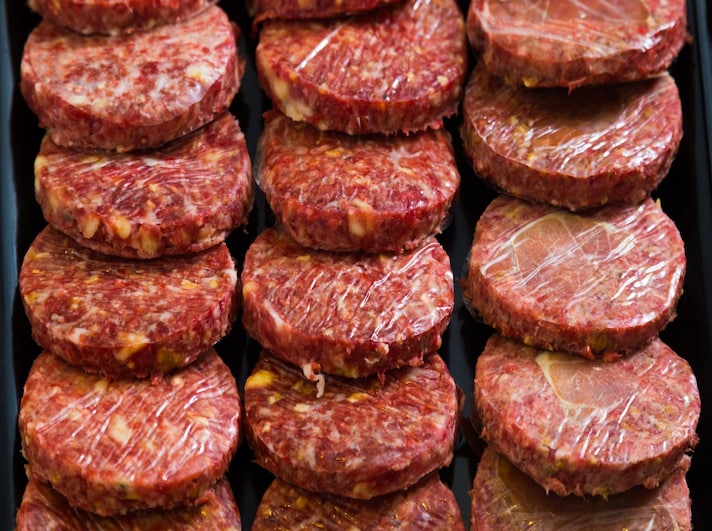
Should the paper on the hamburger be removed before cooking or not? Yes, the film should be removed. You can cook the hamburger with its "wrapping" only if there is baking paper, which can withstand high temperatures. In all other cases it is better to cook the hamburger without superstructures both for a question of taste and for a question of health, reducing the micro-plastics consumed by eating it.
The Film on the Hamburger Should Always Be Removed
Let's start from the beginning: what you often find stuck to the packaged hamburger is not a mistake by the butcher or an excess of attention by the manufacturer. It is a thin layer of food grade plastic film, called "separator film" in jargon. Its job is purely technical: it prevents two hamburgers packaged together from sticking together, maintaining their shape and making portioning easier. It is often present in both industrial products and in artisanal burgers sold in multiple packs. Unlike the transparent films you use to preserve food in the fridge, this one is more rigid, sometimes opaque, but other times so thin and adherent that it is almost invisible. And that is precisely why it can happen that you forget about it and cook it together with the meat. But it is a mistake to avoid.

The short answer to the question “should I remove the film from my burger?” is yes, always. Film is not designed for cooking: it is not edible, it is not resistant to high temperatures, and, if exposed to heat, it can release unwanted substances, as well as compromising the quality of the meat. Cooking the burger with the film still attached means you risk getting a “boiled” side instead of a well-browned one, because the surface of the meat does not come into direct contact with the griddle. The result? No Maillard reaction, less flavor, and a rubbery texture. Not exactly the best for a well-made burger. Plus, leaving the film on could cause unpleasant odors during cooking. In fact, some plastics cannot withstand temperatures above 212-248°F/100-120 °C, and grills or burger pans easily reach 360-390°F/180-200 °C. The risk, in addition to disappointment at the table, is that of slightly contaminating the food with unwanted particles, even if minimal.
Another thing you might want to know: the presence of film is not a sign of poor quality. In fact, many food companies and butchers use it to preserve the integrity of the product and facilitate packaging. It's a matter of convenience, not carelessness. But it's up to you to do the last step, before turning on the stove. Remember: to get a perfect burger, it's not enough to choose the right meat and cook it the right way. You also need to pay attention to small details, like the film. The surface of the meat must be free to come into direct contact with the heat source to create that delicious crust that makes every bite truly satisfying.
;Resize,width=767;)
